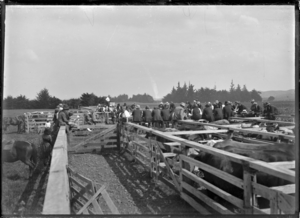Maungakaramea facts for kids
Quick facts for kids
Maungakaramea
|
|
|---|---|
| Country | New Zealand |
| Region | Northland Region |
| District | Whangarei District |
| Ward | Bream Bay Ward |
| Electorates |
|
| Area | |
| • Total | 1.00 km2 (0.39 sq mi) |
| Population
(June 2023)
|
|
| • Total | 300 |
| • Density | 300/km2 (780/sq mi) |
Maungakaramea is a small place in the Northland area of New Zealand. It's located southwest of the city of Whangārei.
In Maungakaramea, you can find the Tangihua Forest, the Maungakaramea Sports Club, and the Mid Western Rugby Club.
Contents
History of Maungakaramea
The name Maungakaramea was given to this area by the local Māori. The name has two possible meanings. One idea is that "Karamea" refers to speargrass, making the name "speargrass mountain". Another idea is that Karamea is a reddish clay used for war paint. So, a good way to understand the name is "Red Ochre Mountain".
Around the mid-1700s, a Māori chief named Te Ponaharakeke, from the Ngāpuhi tribe, joined with Te Ngarokiteuru. They drove the Ngaitahuhu tribe out of the area from Whangārei to Waipu, Waihonga, and Tangihua.
The first time a European person was recorded in Maungakaramea was in 1820. This was when Reverend Samuel Marsden met a Māori tribe while traveling through the Kaipara Harbour.
The New Zealand government bought the Maungakaramea land blocks in 1855. Parts of this land were then opened for sale to settlers. The area we know as Maungakaramea today became available for people to choose land in May 1859.
Some of the first European settlers included brothers Henry Spear Wilson and Daniel Cook Wilson. Also, Jonathan Wigmore Sherlock and his wife Ann arrived from Ireland in 1859. They were among the first to buy land in Maungakaramea.
The local Maungārongo Marae (a traditional Māori meeting place) and its meeting house are important. They are a gathering spot for the Ngāpuhi sub-tribes (called hapū) of Ngāti Hine, Ngāti Te Rino, Te Parawhau, and Te Uriroroi.
Maungakaramea's Population
Statistics New Zealand describes Maungakaramea as a rural settlement. It covers about 1 square kilometer. As of June 2023, its estimated population was 300.
| Historical population for Maungakaramea | ||
|---|---|---|
| Year | Pop. | ±% p.a. |
| 2006 | 261 | — |
| 2013 | 306 | +2.30% |
| 2018 | 282 | −1.62% |
| 2023 | 300 | +1.25% |
| The 2006 population is for a smaller area of 0.86 km2 | ||
In the 2023 New Zealand census, Maungakaramea had 300 people. This was a small increase of 18 people since the 2018 census. The median age was about 51.9 years.
Most people in Maungakaramea identified as European (Pākehā), about 92%. About 18% identified as Māori. English was spoken by most people (97%), and a small number (4%) spoke the Māori language. About 19% of the people were born outside New Zealand.
When it came to religion, 25% of people identified as Christian. A larger group, 66%, said they had no religion.
Learning in Maungakaramea
Maungakaramea School is a school for students from years 1 to 8. It teaches both boys and girls. As of February 2024, the school has 110 students. The school celebrated its 125th anniversary in the year 2000.
The Land Around Maungakaramea
Maungakaramea is home to a type of volcano called a basaltic volcano. It rises to a height of 225 meters. This volcano is located in an area known as the Northland Allochthon, which describes the type of land and rocks found there.


